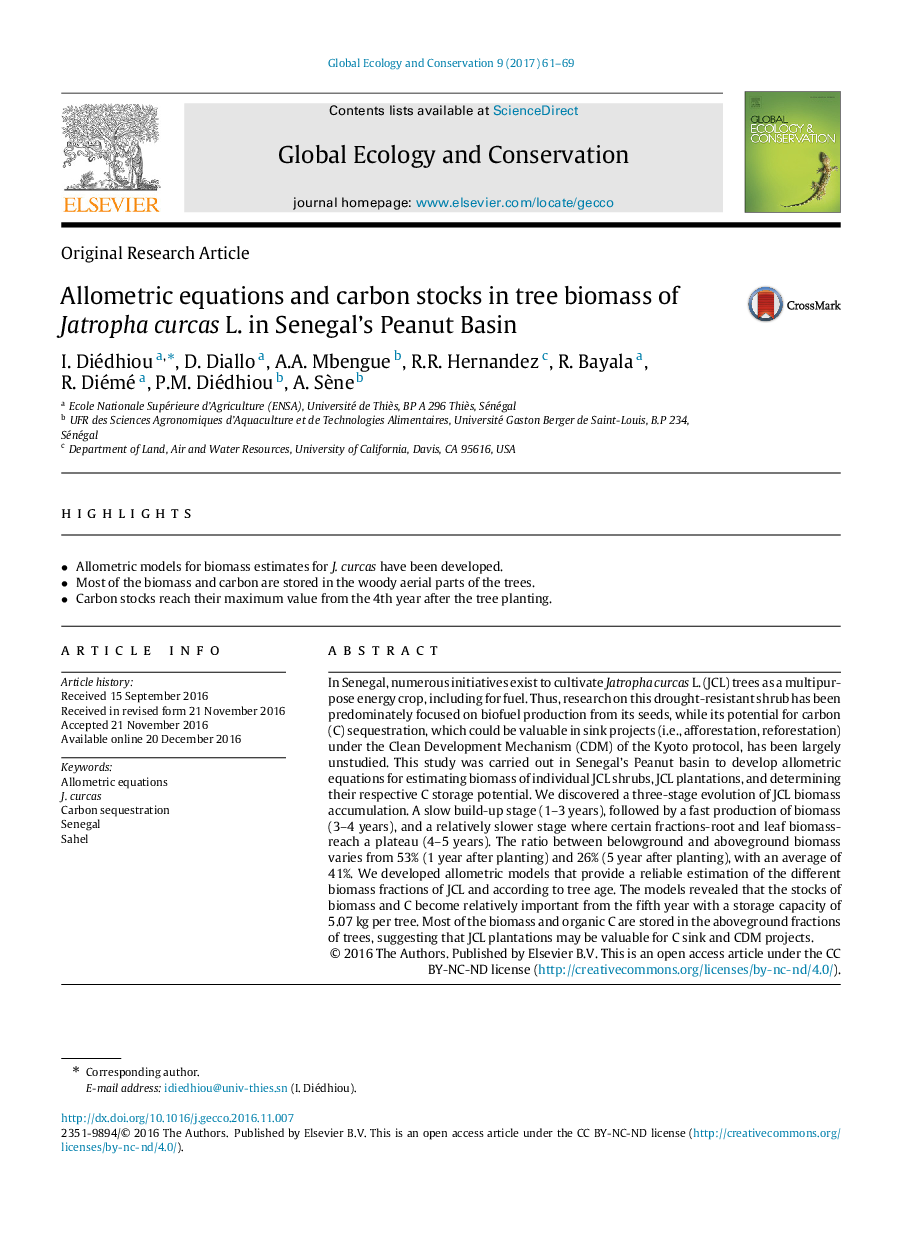| کد مقاله | کد نشریه | سال انتشار | مقاله انگلیسی | نسخه تمام متن |
|---|---|---|---|---|
| 5742429 | 1617658 | 2017 | 9 صفحه PDF | دانلود رایگان |

- Allometric models for biomass estimates for J. curcas have been developed.
- Most of the biomass and carbon are stored in the woody aerial parts of the trees.
- Carbon stocks reach their maximum value from the 4th year after the tree planting.
In Senegal, numerous initiatives exist to cultivate Jatropha curcas L. (JCL) trees as a multipurpose energy crop, including for fuel. Thus, research on this drought-resistant shrub has been predominately focused on biofuel production from its seeds, while its potential for carbon (C) sequestration, which could be valuable in sink projects (i.e., afforestation, reforestation) under the Clean Development Mechanism (CDM) of the Kyoto protocol, has been largely unstudied. This study was carried out in Senegal's Peanut basin to develop allometric equations for estimating biomass of individual JCL shrubs, JCL plantations, and determining their respective C storage potential. We discovered a three-stage evolution of JCL biomass accumulation. A slow build-up stage (1-3 years), followed by a fast production of biomass (3-4 years), and a relatively slower stage where certain fractions-root and leaf biomass-reach a plateau (4-5 years). The ratio between belowground and aboveground biomass varies from 53% (1 year after planting) and 26% (5 year after planting), with an average of 41%. We developed allometric models that provide a reliable estimation of the different biomass fractions of JCL and according to tree age. The models revealed that the stocks of biomass and C become relatively important from the fifth year with a storage capacity of 5.07 kg per tree. Most of the biomass and organic C are stored in the aboveground fractions of trees, suggesting that JCL plantations may be valuable for C sink and CDM projects.
Journal: Global Ecology and Conservation - Volume 9, January 2017, Pages 61-69